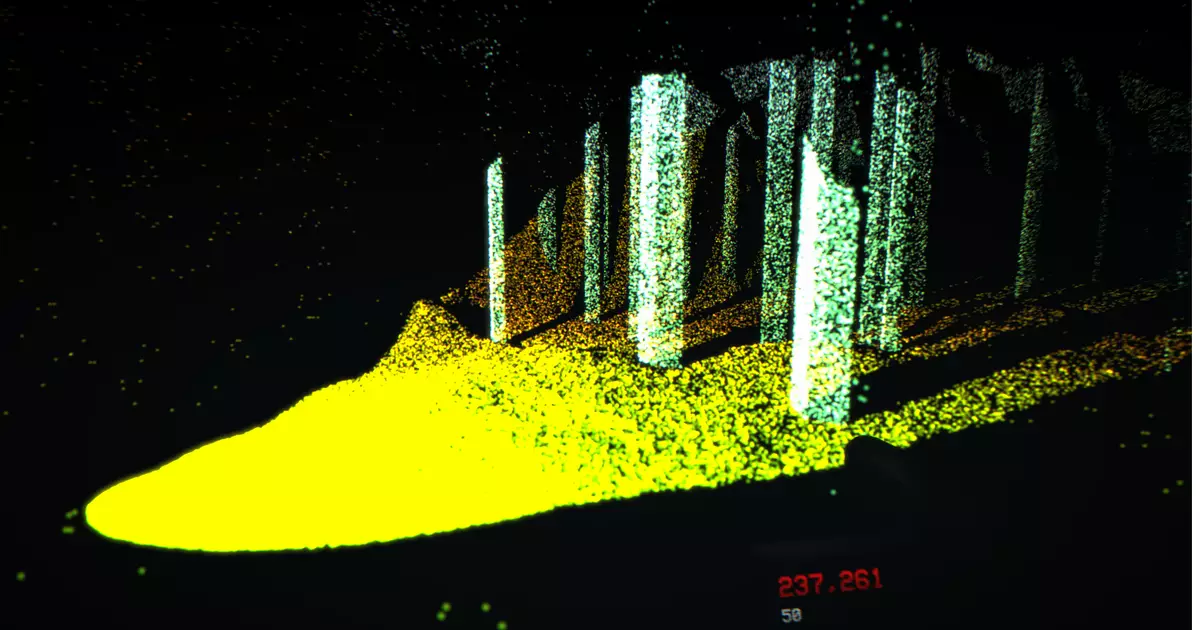LiDAR, or “light detection and ranging,” offers a fascinating glimpse into the world of scanning and mapping. With a mechanism that shoots lasers and measures the time it takes for them to bounce back, LiDAR has established itself as a pivotal tool in various scientific domains. From elucidating the tangled networks of underground caves to visually documenting the environmental changes in the Amazon rainforest, this technology has transcended its initial utility and carved a niche in artistic expression.
Emerging from the realm of empirical science, LiDAR encourages a unique blend of visual artistry that fosters a deeper connection with geography. Artists have creatively harnessed LiDAR’s precision to construct ethereal representations of landscapes, creating a dichotomy between scientific accuracy and artistic impression. The results are often surreal visualizations that evoke a sense of otherworldliness, where the stark differences between reality and abstraction coexist harmoniously.
The Pioneering Blend of Gaming and Art in LiDAR Exploration Program
The “LiDAR Exploration Program,” an innovative creation by KenForest, encapsulates this bridge between art and gaming. Described as a “relaxing atmospheric horror” experience, the game invites players to traverse surreal maps utilizing a handheld LiDAR scanner. In essence, it operates similarly to familiar simulations, yet introduces an eerie twist that captivates the audience. With its pacing reminiscent of “PowerWash Simulator,” players embark on a journey that intricately blends contemplation with the thrill of exploration.
While traditional games may rely on fast-paced action, the LiDAR Exploration Program thrives on methodical gameplay. Each level presents players with specific scanning tasks, encouraging a slow, deliberate interaction with the environment. The static landscapes, devoid of any immediate threat, create a soothing backdrop as players meticulously uncover each detail using a laser-synchronized perspective. The game’s ingenious design promotes a tranquil yet disquieting experience, as players are liberated from the chaos typically synonymous with horror genres.
A Unique Gameplay Experience: Discovering the Unearthly
One of the game’s core mechanics involves the haunting realization that the scanned objects may be deceptive in their appearance. As players manipulate their viewpoint, hollow structures become apparent, challenging the very notion of what is real within the game’s universe. This artistic choice creates an unsettling sense of vulnerability, where players are simultaneously empowered and constrained by their scanning abilities. The right-click function allows for a full-screen scan, creating an invigorating tension between stillness and movement — it’s almost like printing a 2D image that suddenly morphs into a three-dimensional tapestry upon altering one’s perspective.
The game thrives on these subtle chills, deriving tension organically from its core mechanics instead of relying on jump scares or overt horror tropes. Each scan becomes a meditation, forcing players to confront the unseen elements lurking within their perceived reality. The deliberate pacing invites reflection and an almost cerebral engagement with the spaces players navigate. In doing so, it transcends mere entertainment and prompts deeper introspection about our relationship with art and technology.
The Artistic Lens of LiDAR and Its Implications
As I ventured through the demo, I was particularly drawn to the lush visuals and the way light interacts within the game’s environment. The dynamic range of LiDAR offers a meticulous dance of illumination and shadow, allowing players to engage artistically with their surroundings. Through narrowing beams, I delved deeper into the textures of trees and the eerie silence of the virtual forest. Each interaction sparked a newfound appreciation for light’s properties and its role in defining space.
Moreover, the game does not shy away from presenting moments of existential dread and uncertainty, mirroring the fears associated with the unknown. The scanner serves as a metaphorical beacon, illuminating not just the physical realm but also the psychological spaces that players must navigate. This adds an enriching layer of narrative depth, as the act of exploration becomes as much about uncovering the environment as it is about self-discovery.
The LiDAR Exploration Program thus stands as a testament to how interactive experiences can be transformed into contemplative art forms. By blurring the lines between gaming and artistic exploration, KenForest cultivates a space where technology and imagination converge, inviting players to challenge their perceptions and embrace the beauty — and sometimes the terror — inherent in the unknown. This game is not merely a pastime; it’s an invitation to engage with the eerie elegance of existence itself.

